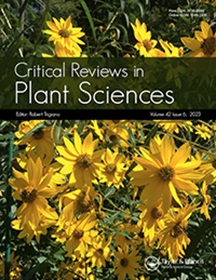Seed Survival at Low Temperatures: A Potential Selecting Factor Influencing Community Level Changes in High Altitudes under Climate Change
IF 6
2区 生物学
Q1 PLANT SCIENCES
引用次数: 5
Abstract
Abstract In alpine ecosystems, imbibed seeds are often exposed to temperatures as low as −35 °C, challenging their survival in the soil. Here, we show that seeds have mechanisms to survive cold climate prevalent in alpine ecosystems and have identified three such mechanisms from existing literature, including two forms of freezing avoidance (the presence of water impermeable seed coats, and the supercooling of seed tissues) and one form of freezing tolerance (by extracellular-freezing). Experimentally-derived published data on the lowest temperature recorded at which 50% of a seed sample survived (i.e., lethal temperature; LT50) was used to generate a dataset of 24 species across low altitude, boreal and alpine environments. We assumed that the ability of seeds to maintain viability at very low temperatures would increase in species associated with higher altitudes conferring a competitive advantage that would be lost under projected climate change. However, our results reveal to underpin that seeds from boreal species survive relatively better at lower temperatures than those of alpine species. Paradoxically, a warming climate could lead to alpine seed death due to extremes of cold at the soil surface resulting from snow cover loss, whilst the declining snow cover may facilitate boreal forest colonization above the current treeline.低温种子存活:气候变化下影响高海拔地区群落水平变化的潜在选择因子
摘要在高山生态系统中,吸收的种子通常暴露在低至−35的温度下 °C,挑战它们在土壤中的生存。在这里,我们表明种子具有在高山生态系统中普遍存在的寒冷气候中生存的机制,并从现有文献中确定了三种这样的机制,包括两种形式的防冻(不透水的种皮的存在和种子组织的过冷)和一种形式的抗冻性(通过细胞外冷冻)。实验得出的已发表的关于50%种子样本存活的最低温度(即致死温度;LT50)的数据被用于生成低海拔、北方和高山环境中24个物种的数据集。我们假设,在与海拔较高相关的物种中,种子在非常低的温度下保持生存能力的能力会增加,这将赋予在预计的气候变化下失去的竞争优势。然而,我们的研究结果表明,北方物种的种子在较低的温度下比高山物种的种子存活得相对更好。矛盾的是,气候变暖可能会导致高山种子死亡,原因是积雪减少导致土壤表面极度寒冷,而积雪减少可能会促进当前树线以上的北方森林定植。
本文章由计算机程序翻译,如有差异,请以英文原文为准。
求助全文
约1分钟内获得全文
求助全文
来源期刊
CiteScore
12.90
自引率
1.40%
发文量
15
审稿时长
>12 weeks
期刊介绍:
Critical Reviews in Plant Sciences focuses on presenting in-depth and up-to-date reviews of timely and/or cutting-edge subjects in the broad discipline of plant science, ranging from molecular biology/biochemistry through the areas of cell biology, plant pathology and physiology, genetics, classical botany, and ecology, to practical agricultural applications. Articles in the journal provide an up-to-date literature base for researchers and students, pointing the way towards future research needs. The journal is also a significant source of credible, objective information to aid decision makers at all levels.

 求助内容:
求助内容: 应助结果提醒方式:
应助结果提醒方式:


